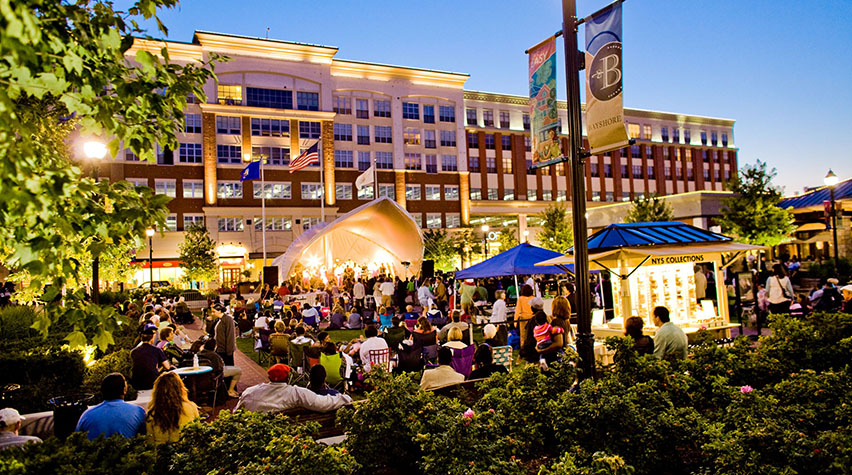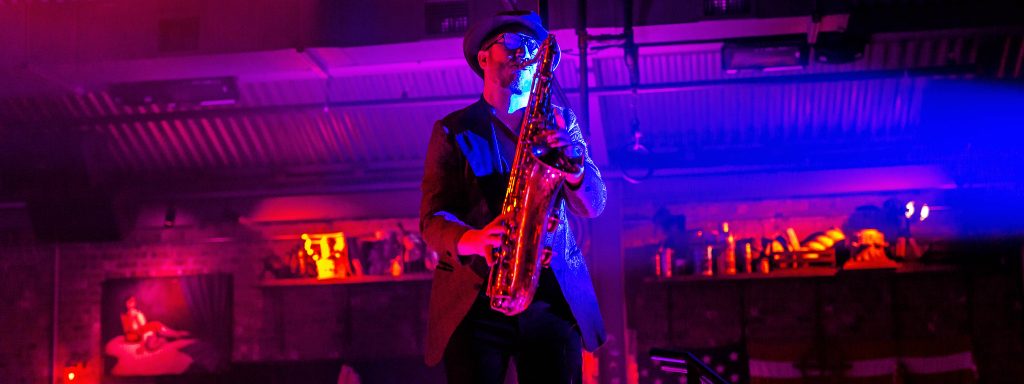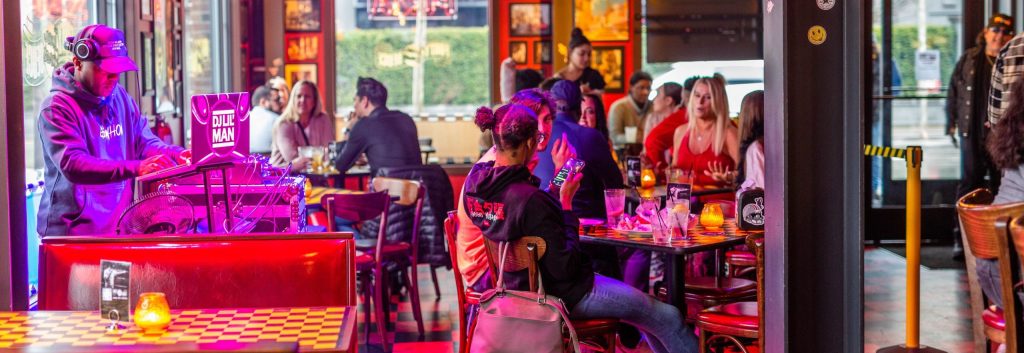By Yaromir Steiner
For retail and mixed-use developers (not to mention civic and community leaders) great public spaces are almost always the showpiece: the smiling shoppers and families you see depicted on the website or brochure aren’t paying at a register or strolling through the parking lot—they are sitting on benches, playing in fountains, or taking a relaxing walk along a tree-lined path.
But for all of their popularity and prominence, the fundamental question remains: are they worth it? Is the initial cost to develop community and public spaces worth the investment?
At what cost?
Potential
It might not be immediately obvious how investing in public parks, town squares and other public spaces makes financial sense in the context of a larger retail or mixed-use project. Common areas don’t generate direct rent, making them seemingly the worst kind of upfront expense: the kind with little to no direct potential for long-term revenue generation.
But that assessment is flawed—or at least incomplete. The key to understanding the true power and potential of inviting open-air environments and great public and community spaces is to appreciate just how important they can be in terms of driving traffic, elevating the public profile of a mixed-use project and shaping the public perception of a development.
Impact
A memorable and defining sense of place is a vital, if sometimes intangible asset for a mixed-use development. Therein lies the problem. If it is intangible, it won’t fit on a balance sheet. The reality however, is that intangible assets can be enormously significant. Shifting the focus to create a unique and enduring sense of place will attract visitors and entice them to come often, stay longer and spend more money.
While those intangible assets are enormously significant, the impact of great public spaces resonates in some more tangible ways, as well:
- Tenant-bait: Public spaces attract and anchor other desirable rent-paying retailers. Both restaurants and non-food retail and entertainment tenants always request spaces in or adjacent to these locations—regardless of the rental premium they may pay.
- Cost-effective: Public spaces take a limited amount of land, require less cost than anchor store allowances and require no additional parking. Considering their potential impact on a center, they are actually a bargain.
- Communal: The public nature of these spaces makes the “community” ownership of the spaces—and, by extension, of the shopping center—a reality. Customers become literally and figuratively invested in their shopping environment, and feel a sense of ownership and pride—a dynamic that drives the number of visits, length of visits and sales per visit.
Sustainable Adding emphasis on public spaces is a long-term investment in sustainability. Retail developments with true staying power and community importance are positioned around significant and iconic public spaces like a large central park or a grand main-street-style plaza. They aren’t places to stop by or swing through on your way to somewhere—they are somewhere: destinations.
Experiential
Experiential is a popular buzzword, largely because it captures an important truth: creating an experience that leaves a lasting impression, rather than measuring success solely by sales-per-square-foot, can pay off handsomely in the long run. The best public spaces are created to generate experiences with emotional content. Examples include a fountain playing host to splashing children, a photo opportunity for students headed to prom, or a vista spread out before restaurant terraces where diners can enjoy al fresco dining with a view.
Animated
Think beyond the lawn, multi-use spaces and gazebo. Great public spaces do more than just provide a blank slate, they add energy and dynamism to a project. One of the ways in which developers are squaring the circle of investing in great public spaces is by finding creative new ways to foster than animation—making those spaces not only compelling, but profitable. When designed correctly, those spaces can be used from everything from yoga to outdoor movies and conferences to weddings.
The Next Next Thing
Our newest project, the 1.2 million square foot Liberty Center, just north of Cincinnati, embodies a bold new approach to public spaces that more developers may begin embracing in the not-too-distant future. The investment in public spaces at Liberty Center is four to five times larger than what traditional developers are doing. This quantum leap forward would not be possible without complex and creative public-private partnerships: a factor that has the potential to shift the value equation in an even more positive direction.
The answer to the question of whether public and community spaces cost or pay is, of course, both. The costs to create truly creative and engaging public spaces are indeed high. But, when done correctly, creatively, and with an understanding of what those spaces can bring to a project, those costs will translate into significant—and in some cases extraordinary—added value.






